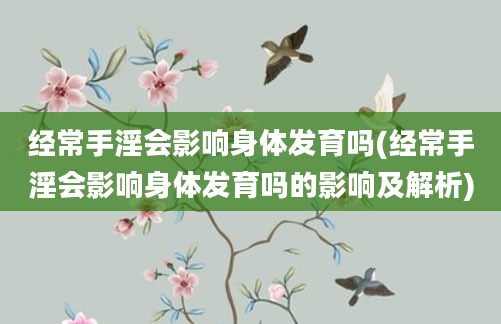Introduction
The appearance of inchworms, also known as measuring worms or loopers, can be a common occurrence in many gardens and natural environments. These small caterpillars have a distinctive way of moving, arching their bodies as they crawl, hence the name inchworm. In this article, we will delve into the reasons why inchworms appear, analyze the impact they can have, and suggest methods for managing and controlling them.
Reasons for the Appearance of Inchworms

Inchworms belong to the Geometridae family of moths and can be found in various habitats worldwide. The primary reason for the appearance of inchworms is their life cycle as caterpillars. Female moths lay eggs on leaves, and when these eggs hatch, they develop into caterpillars that feed on foliage. The abundance of food sources, such as leaves and tender plant parts, attracts inchworms to certain plants and trees where they can find sustenance.
Environmental Factors
Environmental factors play a significant role in the prevalence of inchworm infestations. Mild winters and early springs can lead to increased insect populations, including inchworms. Additionally, certain weather conditions, such as high humidity and moisture, can create a favorable environment for inchworms to thrive. Changes in temperature and precipitation patterns can also impact insect populations, causing fluctuations in inchworm numbers.
Impact of Inchworms on Plants
While inchworms may seem harmless due to their small size, they can have a significant impact on plant health. These caterpillars feed voraciously on leaves, often consuming large portions of foliage. This can weaken plants, stunt growth, and reduce the overall vigor of the vegetation. Severe infestations of inchworms can defoliate entire trees or shrubs, leading to stress and potentially compromising the plant's ability to photosynthesize effectively.
Damage to Crops and Gardens
For farmers and gardeners, inchworms can pose a serious threat to crops and ornamental plants. Certain crops, such as fruits and vegetables, are particularly vulnerable to inchworm damage. The feeding habits of inchworms can result in cosmetic damage to fruits and vegetables, making them unsuitable for sale or consumption. In gardens, ornamental plants and flowers may also suffer from inchworm infestations, affecting their aesthetic appeal.
Methods for Managing Inchworm Infestations
There are several strategies that can be employed to manage inchworm infestations effectively. One common method is the use of biological controls, such as natural predators and parasites that feed on inchworms. Introducing beneficial insects or birds that prey on caterpillars can help keep inchworm populations in check. Additionally, biological insecticides derived from bacteria or fungi can be used to target and control inchworms without harming beneficial insects.
Chemical Control Options
In cases where inchworm populations are severe and immediate action is required, chemical control options can be considered. Insecticides specifically formulated for caterpillar control can be applied to affected plants to reduce inchworm numbers. It is essential to follow application instructions carefully and consider the potential impact on non-target organisms and the environment when using chemical control methods.
Cultural Practices
Implementing cultural practices in the garden or agricultural setting can also help prevent and manage inchworm infestations. Regularly monitoring plants for signs of caterpillar activity, such as chewed leaves or droppings, can help identify early infestations. Pruning and removing infested branches or plant parts can also reduce inchworm populations and prevent further damage to plants.
Conclusion
Inchworms can be a nuisance for gardeners, farmers, and nature enthusiasts alike, causing damage to plants and trees if left unchecked. Understanding the reasons for the appearance of inchworms, their impact on vegetation, and the various management strategies available is crucial for effectively controlling infestations. By implementing a combination of biological controls, cultural practices, and, if necessary, chemical control methods, inchworm populations can be managed to protect plants and maintain a healthy garden or agricultural environment.
Remember, inchworms are a natural part of the ecosystem, and efforts should be made to balance their populations with the overall health of the environment.

 产后肥胖的原因有哪些(产后肥胖原因解析为什么会出现产后肥胖?)
产后肥胖的原因有哪些(产后肥胖原因解析为什么会出现产后肥胖?) 电冰箱老是出现音乐声怎么回事(电冰箱频繁发出音乐声的原因解析)
电冰箱老是出现音乐声怎么回事(电冰箱频繁发出音乐声的原因解析) 坐月子胸前一片红发痒_坐月子时胸前红疹瘙痒原因解析
坐月子胸前一片红发痒_坐月子时胸前红疹瘙痒原因解析 祁连山气候成因分析(祁连山气候形成的原因及影响分析)
祁连山气候成因分析(祁连山气候形成的原因及影响分析) 立陶宛通话中断原因(立陶宛通话中断原因解析)
立陶宛通话中断原因(立陶宛通话中断原因解析) 经常手淫会影响身体发育吗(经常手淫会影响身体发育吗的影响及解析)
经常手淫会影响身体发育吗(经常手淫会影响身体发育吗的影响及解析) 为什么电脑的设置打不开(电脑设置无法打开的原因解析)
为什么电脑的设置打不开(电脑设置无法打开的原因解析) 凯美瑞车尾灯小灯不亮怎么回事(凯美瑞车尾灯小灯不亮原因解析)
凯美瑞车尾灯小灯不亮怎么回事(凯美瑞车尾灯小灯不亮原因解析)



